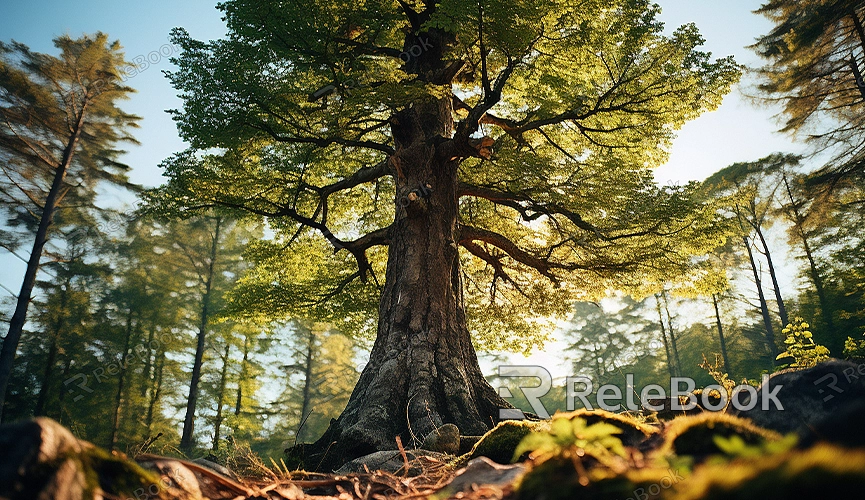Creating Large Tree Models in Blender
Creating large tree models in Blender requires careful attention to details and techniques. From the solid texture of the trunk to the lush layers of the canopy, every detail plays a key role in showcasing the vitality of trees. Moreover, managing size proportions and using textures for different details are essential considerations when handling the model. The following are crucial details and points to note when creating large tree models in Blender, hoping they prove helpful.

1. The Importance of Reference Materials
Before diving into modeling, it's crucial to gather real-world photos and images of large trees. These references provide valuable insights into the structure, bark texture, and canopy shape of trees, aiding in creating a more realistic and lifelike model.
2. Utilizing Basic Modeling Tools
Blender's basic modeling tools, such as cylinders, cones, and cubes, are ideal for creating trunks and main branches. By adjusting the size and shape of these basic forms, start building the overall structure of the large tree. Pay attention to maintaining the natural curves and forks of the trunk and main branches.
3. Multi-level Branching and Canopy Design
The canopy of a large tree is often a defining feature. Use a multi-level branching structure to gradually build the canopy. Tools like the Array Modifier can be employed to make branches grow more naturally. Carefully design branches at different levels, considering the natural branching and growth patterns of trees in a real environment.
4. Texture Painting and Mapping
Choose or create suitable tree texture images and apply them to the trunk and canopy of the model. Use Blender's UV mapping tools to ensure the texture is correctly applied to each part. Adjust the mapping to coordinate the texture with the model surface, achieving a realistic effect. Download high-quality 3D texture maps from Relebook and import them into Blender for use.
5. Enhancing Realism with Color and Lighting
Adjust the color of the tree, taking into account the influence of seasons and the environment. Simulate sunlight and shadow effects to enhance the realism of the tree. Blender's lighting tools and rendering settings can assist in achieving this.
6. Detail Sculpting
Use Blender's sculpting tools to add details such as texture on the bark, surface irregularities, and growth nodes on the trunk. These subtle details contribute to a more natural and lively appearance.
7. Consider Animation and Particle Effects
If you plan to use the tree model in a project, especially for animation or rendering scenes with numerous trees, consider using Blender's particle system. Applying particle effects on the model makes it easier to create forests or groves of trees.
Points to Note:
Optimize the Model:
For complex tree models, ensure the model's topology is reasonable for better rendering and animation.
Use Textures Wisely:
Avoid using too many high-resolution textures to prevent performance issues. Use textures of moderate resolution based on scene requirements.
Consider Real-time Rendering:
If real-time rendering is necessary for your project, ensure that the tree model's details and textures do not impact performance negatively.

